Have you ever wondered about the history and artistry behind Venetian plastering? This ancient technique has been used for centuries to create stunning, luxurious walls that mimic the look of polished marble.
In this article, we will explore the materials and tools needed for Venetian plastering, the step-by-step process of applying it, different types of Venetian plaster finishes, as well as the benefits of this decorative technique.
Stay tuned to learn how to maintain Venetian plaster walls and avoid common mistakes in the process.
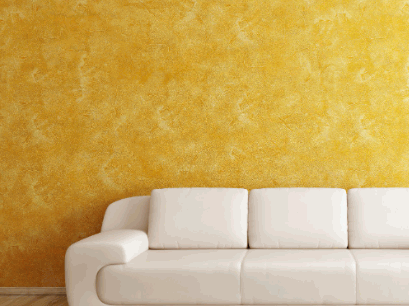
History Of Venetian Plastering
The history of Venetian plastering dates back to the Renaissance era in Venice, Italy when artisans developed the technique to create beautiful decorative finishes on walls.
Initially, Venetian plastering was a practical solution to cover imperfections in buildings, providing a smooth and durable surface. Over time, this method evolved into an art form, with craftsmen incorporating marble dust and multiple layers to achieve a luxurious appearance reminiscent of polished marble.
During the Renaissance, Venetian plastering became synonymous with elegance and sophistication, adorning the interiors of palaces, churches, and noble houses. The technique later spread beyond Venice, influencing regions like Tuscany, where it became known as ‘Tuscan plaster.’ Its popularity extended to other European countries, leaving a lasting cultural impact on interior design and architecture.
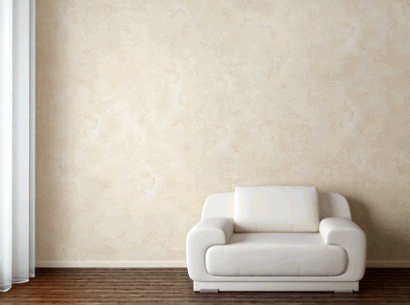
What Is Venetian Plastering?
Venetian plastering is a decorative finish for walls that involves applying multiple coats of plaster to create a smooth and elegant surface with a marble-like texture.
By layering thin coats of plaster and burnishing them to a polished finish, Venetian plastering adds depth and dimension to any space, making it an ideal choice for those looking to elevate their interior design.
The beauty of Venetian plaster lies in its versatility, allowing for a wide range of design possibilities. From creating a rustic, Old-World charm to achieving a contemporary and sleek look, this technique can cater to various aesthetic preferences.
Artisans can utilize different materials such as lime, marble dust, or acrylics to achieve specific textures and colors, giving clients the freedom to customize their walls according to their vision.
Gain insights: Why Is Plastering So Expensive
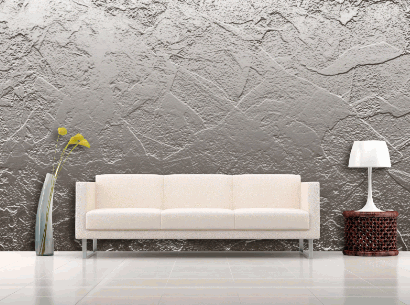
Materials Used In Venetian Plastering
The materials used in Venetian plastering include lime plaster, marble dust, and pigments to create a luxurious and textured finish on walls.
Lime plaster is the primary ingredient that gives Venetian plaster its signature smooth and glossy appearance. It acts as the base material, providing a sturdy foundation for the plaster mixture. Marble dust is added to the lime plaster to enhance durability and create a polished finish.
Pigments play a crucial role in Venetian plastering as they allow for the customization of colors, enabling a variety of finishes from subtle tones to bold hues.
Additional stucco may be used in Venetian plastering to achieve more textured effects. Stucco adds depth and dimension to the finish, creating a more rustic or aged look. Specialized tools such as trowels, spatulas, and polishing stones are essential for applying and manipulating the plaster mixture to achieve different textures and effects.
Tools Required For Venetian Plastering
To achieve a flawless Venetian plaster finish, artisans use specialized tools such as trowels, spatulas, and brushes for precise application and surface preparation.
The trowel is a fundamental tool in applying Venetian plaster as it ensures an even and smooth distribution of the plaster mixture onto the surface.
Spatulas are essential for spreading and blending the plaster seamlessly, allowing artisans to create a polished and luxurious finish.
Brushes play a key role in achieving texture and depth in the plaster, adding a unique artistic touch to the final surface.

How Is Venetian Plastering Done?
Venetian plastering is done by applying thin layers of plaster in a specific technique, often requiring the skill of an artisan to achieve a sample finish that can vary in cost depending on the intricacy.
One of the key steps in Venetian plastering is the meticulous preparation of the surface to be plastered, ensuring it is clean and properly primed to allow for adhesion.
Artisans carefully mix the plaster with water to create the desired consistency, using specialized tools like steel trowels and spatulas to apply the layers evenly and achieve a smooth, polished finish.
During the sampling phase, various techniques such as burnishing and layering are employed to create stunning visual effects that mimic the depth and texture of traditional Venetian plaster.
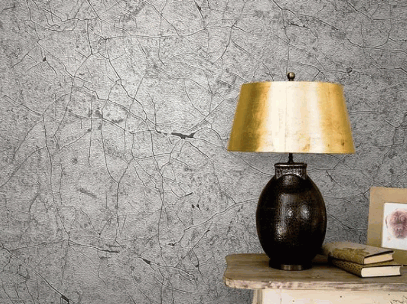
Step-By-Step Process Of Venetian Plastering
The step-by-step process of Venetian plastering involves preparing the surface, applying the base coats, adding color or tint for the desired effect, and finishing with a high sheen to enhance the room’s elegance.
Preparing the surface is crucial as it ensures a smooth and durable foundation for the plaster to adhere to. This step involves cleaning the wall thoroughly, filling any cracks or imperfections, and sanding the surface for optimal adhesion.
Next, applying the base coats is where the magic begins. Multiple thin layers of plaster are carefully applied and polished between each coat to achieve that classic Venetian plaster finish, known for its depth and richness.
In terms of selecting the perfect color or tint, it’s essential to consider the overall room design and lighting. Bold hues can add drama, while soft neutrals create a timeless elegance.
Types Of Venetian Plastering
There are various types of Venetian plastering techniques such as Marmorino, Tadelakt, and Scagliola, each offering unique characteristics and finishes.
While Marmorino is known for its smooth texture and versatility, ideal for creating a polished and elegant look, Tadelakt, originating from Morocco, provides a waterproof and seamless finish, making it suitable for bathrooms and wet areas.
On the other hand, Scagliola mimics the appearance of marble with intricate veining, adding a luxurious touch to interior spaces. These techniques cater to a wide range of preferences, from contemporary to traditional styles, allowing for endless design possibilities.
Marmorino Venetian Plaster
Marmorino Venetian plaster is known for its textured finish and durability, making it an excellent choice for creating elegant surfaces with rich and dark colors.
The texture of Marmorino Venetian plaster adds depth and character to any space, creating a sense of luxury and sophistication. It offers a wide range of color options from deep blues and greens to intense browns and blacks, allowing for dramatic and striking design choices.
Dark color palettes particularly enhance the unique effects of Marmorino Venetian plaster, as they highlight its depth and sheen, adding a touch of opulence.
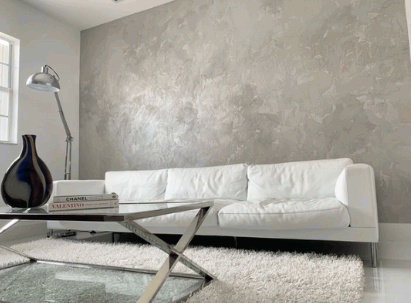
Tadelakt Venetian Plaster
Tadelakt Venetian plaster is a waterproof technique that creates a smooth and reflective surface, often used in bathrooms and spa-like settings, with shades of green enhancing its appeal.
This unique plastering method originating from Morocco is renowned for its ability to repel water, making it ideal for areas needing protection against moisture. The pigmented lime plaster not only adds a touch of sophistication but also provides a calming and serene ambiance, perfect for relaxation. Its seamless finish reflects light, giving a spacious and airy feel to the room. The blend of green hues not only symbolizes nature but also brings a sense of tranquility and balance to the overall decor.
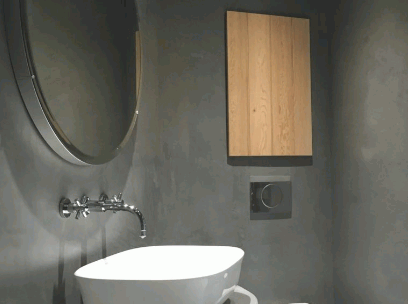
Scagliola Venetian Plaster
Scagliola Venetian plaster is an imitation technique that replicates the look of marble, offering an elegant design element with versatile color options, including shades of taupe.
One of the main characteristics of Scagliola Venetian plaster is its ability to mimic the intricate veining patterns and luxurious appearance of natural marble, making it a cost-effective alternative for achieving a high-end aesthetic in interior decor. The versatility of this technique allows for the creation of various textures and finishes, ranging from smooth and polished surfaces to more rustic and aged effects. When using colors like taupe, Scagliola Venetian plaster can produce sophisticated finishes that add warmth and depth to any space, be it traditional or modern.
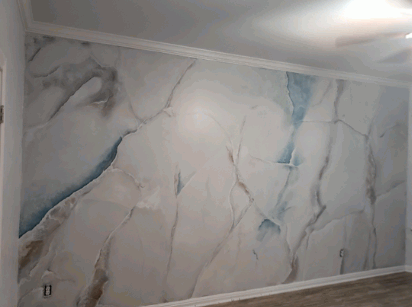
Benefits Of Venetian Plastering
Venetian plastering offers numerous benefits, including high resistance to wear, a glossy sheen finish, low maintenance requirements, durable surfaces, and customizable aesthetics.
One of the standout advantages of Venetian plastering is its exceptional durability, providing long-lasting beauty to surfaces. The material’s resistance to mold and mildew makes it ideal for spaces prone to moisture, such as bathrooms or kitchens. The seamless finish achieved with Venetian plaster not only enhances the aesthetics of a room but also contributes to easy maintenance, as it can be cleaned with a damp cloth. The versatility of Venetian plaster allows for endless customization options, ranging from subtle textures to striking feature walls, offering a unique touch to any space.
Durability And Longevity
The durability and longevity of Venetian plaster are unmatched, with the application process contributing to longer life, providing an elegant and resistant finish over time.
Venetian plastering, a technique originating in ancient Rome, involves the meticulous layering of lime-based plasters to create a smooth, luxurious texture on walls. This process not only adds a touch of sophistication to any space but also strengthens the structural integrity of the walls, making them more resistant to wear and tear. The skilled artisans who specialize in Venetian plastering understand the importance of using high-quality materials and precise techniques to achieve durable and long-lasting results.
Customizable And Versatile
Venetian plastering is highly customizable and versatile, allowing for diverse design options, especially with earth tones that can be tinted to achieve specific color palettes.
One of the key features of Venetian plaster is its adaptability to various decorative styles, from traditional to modern, making it a favored choice among interior designers and homeowners alike. The ability to customize the texture and finish of Venetian plaster allows for a range of aesthetic possibilities, whether aiming for a smooth, polished look or a more rustic, textured feel.
By experimenting with different application techniques and layers, individuals can create surfaces that are truly unique and personalized, adding character and depth to any space. The tinting process, using natural pigments and additives, further enhances the bespoke nature of Venetian plaster, offering a rich palette to play with in order to achieve the desired ambiance.
Enhances Aesthetics
Venetian plastering significantly enhances the aesthetics of interiors, adding texture, color depth, and design sophistication, especially with the use of dark colors to create moody atmospheres.
With Venetian plastering, the richness of texture variations plays a key role in transforming plain walls into works of art. The intricate layers and subtle imperfections add depth and character to a space, capturing the eye and inviting touch. The interplay of light and shadow on the textured surfaces further enhances the visual interest, creating a dynamic ambiance.
The wide range of hues available in Venetian plaster allows for a spectrum of color richness, from earthy tones to bold shades, enriching the visual palette of the room. Dark colors, such as deep blues or charcoal grays, bring a sense of drama and sophistication, infusing spaces with a mysterious allure.
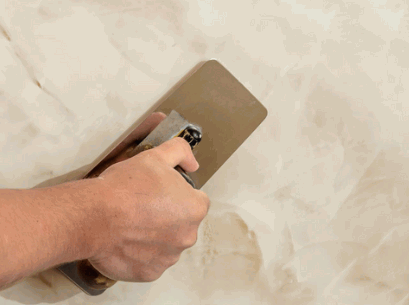
How To Maintain Venetian Plaster Walls
Proper maintenance of Venetian plaster walls involves gentle cleaning methods, periodic touch-ups, and investing in professional care to preserve the pristine white finish and the overall effect over time.
When cleaning Venetian plaster walls, it is crucial to use a soft cloth or brush to avoid damaging the delicate surface. Harsh chemicals or abrasive cleaners should be avoided to prevent any discoloration or scratches on the finish. For periodic touch-ups, it is recommended to keep a small amount of matching plaster handy to fill in any minor cracks or blemishes that may appear over time. By addressing these issues promptly, you can prevent them from becoming more extensive and costly to repair.
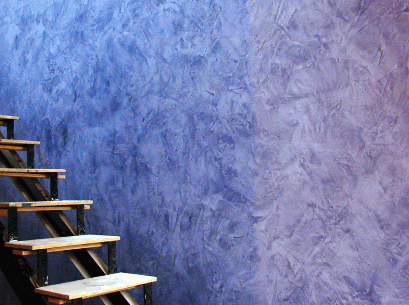
Common Mistakes To Avoid In Venetian Plastering
Avoiding common mistakes in Venetian plastering is crucial to achieving flawless finishes and preventing costly rework due to improper application techniques, inadequate tools, or design errors.
Properly preparing the surface before applying Venetian plaster is essential for a smooth and durable finish. Ensuring the base coat is properly cured and free of debris will result in a better bond for the plaster. Using the correct trowel with the right pressure and angle can impact the texture and sheen of the final product.
Keep in mind to apply thin, even layers of plaster to avoid uneven drying and potential cracking. It’s also important to work in small sections at a time to maintain consistency in color and texture. In terms of design, experiment with different application techniques like mottling or sponging to create unique patterns and depth.
Conclusion
Venetian plastering represents a timeless design approach that enhances room aesthetics with its unique texture and visual effect, making it a popular choice for creating elegant and sophisticated interiors.
One of the key characteristics of Venetian plaster is its design versatility. It can be applied in various ways to achieve different looks, from smooth and polished to textured and rustic, allowing for a range of design options to suit different interior styles and preferences.
The finish of Venetian plaster has the ability to enhance rooms in multiple ways. Its reflective properties can make smaller spaces appear larger and brighter, while adding depth and warmth to larger rooms, creating a sense of luxury and sophistication.
The enduring appeal of Venetian plaster lies in its durability and timeless charm. Unlike paint, which may need frequent touch-ups, Venetian plaster is known for its longevity and ability to withstand the test of time, retaining its beauty for years to come.

